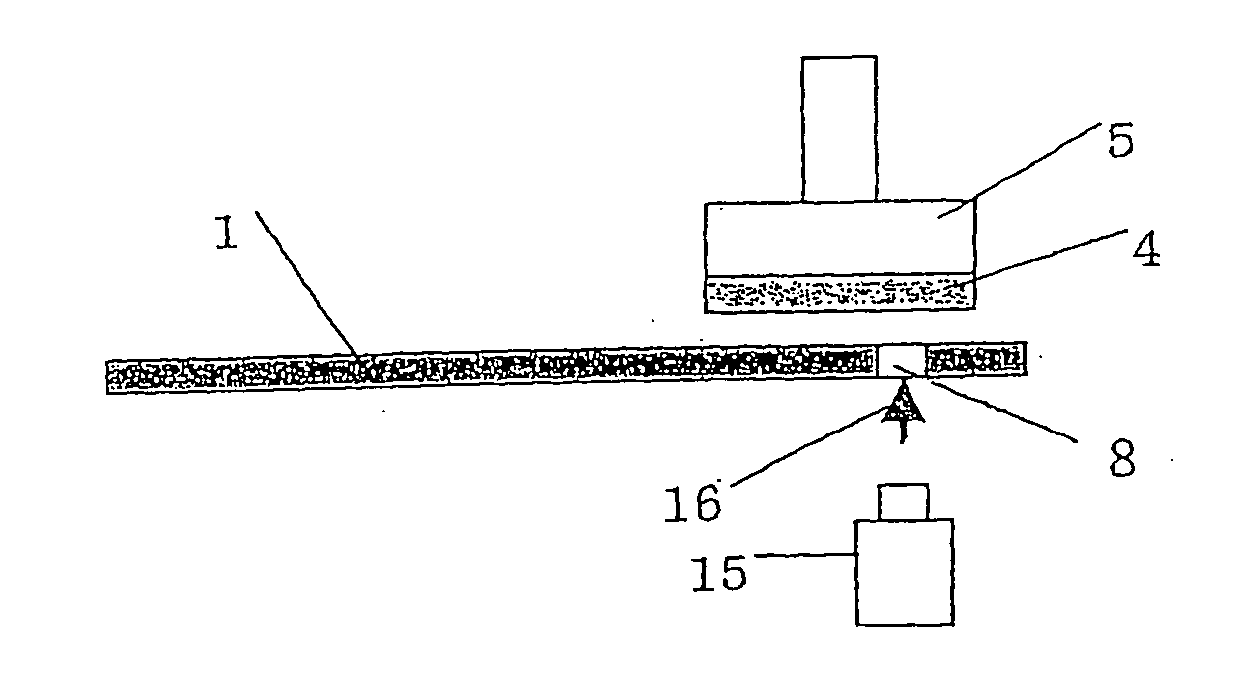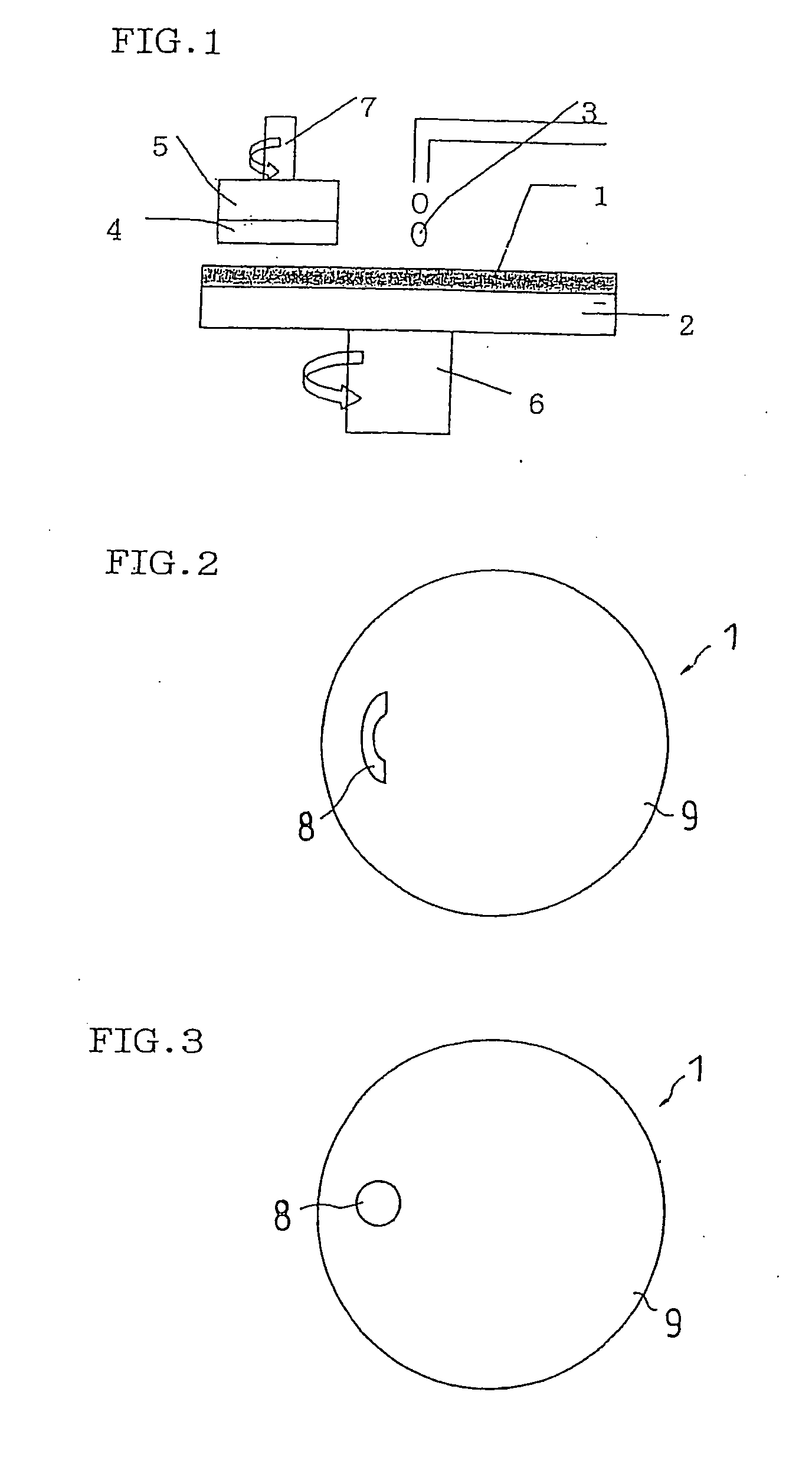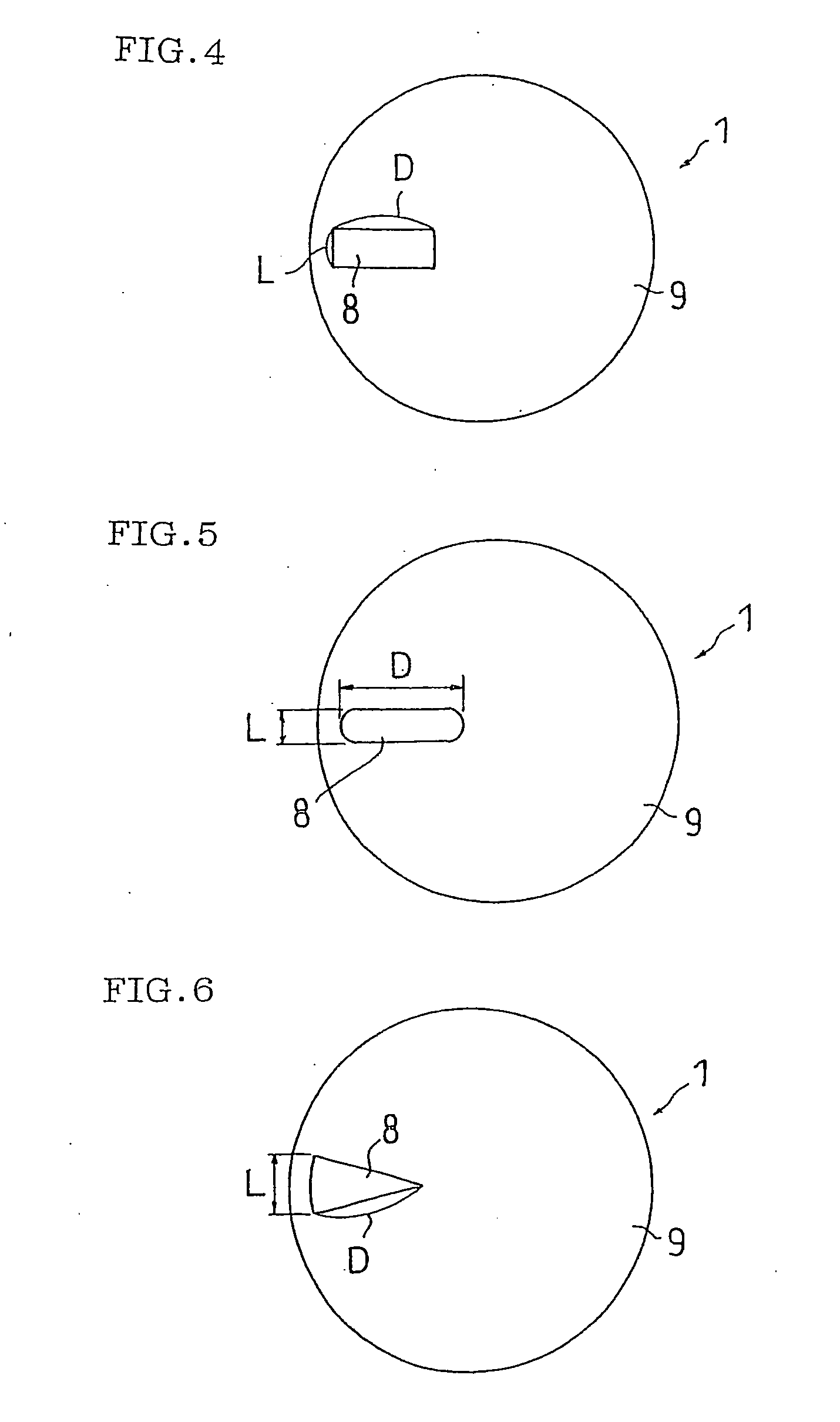Polishing pad and method for manufacturing semiconductor device
a technology of polishing pad and semiconductor device, which is applied in the direction of manufacturing tools, flexible parts wheels, lapping machines, etc., can solve the problems of judging the planarity of the surface waste of treatment time of the test wafer and the cost of treatment, and difficult to accurately predict the processing results without actual processing of the product, so as to reduce the planarity of the object, improve the polishing effect, and reduce the strength of the polishing region
- Summary
- Abstract
- Description
- Claims
- Application Information
AI Technical Summary
Benefits of technology
Problems solved by technology
Method used
Image
Examples
production example 1
[0163] 125 parts by weight of polyester polyol (number-average molecular weight 2440) consisting of adipic acid and hexane diol were mixed with 31 parts by weight of 1,4-butane diol, and the temperature of the mixture was regulated at 70° C. To this mixture were added 100 parts by weight of 4,4′-diphenylmethane diisocyanate previously regulated at a temperature of 70° C., and the mixture was stirred for about 1 minute. The mixture was poured into a container kept at 100° C. and post-cured at 100° C. for 8 hours to prepare polyurethane resin. The prepared polyurethane resin was used to prepare a light-transmitting region (length 57 mm, width 19 mm, thickness 1.25 mm) by injection molding. The light transmittance of the prepared light-transmitting region and the rate of change thereof are shown in Table 1.
production example 2
[0164] A light-transmitting region (length 57 mm, width 19 mm, thickness 1.25 mm) was prepared in the same manner as in Production Example 1 except that 77 parts by weight of polyester polyol (number-average molecular weight 1920) consisting of adipic acid and hexane diol was used, and the amount of 1,4-butane diol was changed to 32 parts by weight. The light transmittance of the prepared light-transmitting region and the rate of change thereof are shown in Table 1.
production example 3
[0165] A light-transmitting region (length 57 mm, width 19 mm, thickness 1.25 mm) was prepared in the same manner as in Production Example 1 except that 114 parts by weight of polytetramethylene glycol (number-average molecular weight 890) was used as the polyol, and the amount of 1,4-butane diol was changed to 24 parts by weight. The light transmittance of the prepared light-transmitting region and the rate of change thereof are shown in Table 1.
PUM
| Property | Measurement | Unit |
|---|---|---|
| thickness | aaaaa | aaaaa |
| light transmittance | aaaaa | aaaaa |
| wavelength range | aaaaa | aaaaa |
Abstract
Description
Claims
Application Information
 Login to View More
Login to View More - R&D
- Intellectual Property
- Life Sciences
- Materials
- Tech Scout
- Unparalleled Data Quality
- Higher Quality Content
- 60% Fewer Hallucinations
Browse by: Latest US Patents, China's latest patents, Technical Efficacy Thesaurus, Application Domain, Technology Topic, Popular Technical Reports.
© 2025 PatSnap. All rights reserved.Legal|Privacy policy|Modern Slavery Act Transparency Statement|Sitemap|About US| Contact US: help@patsnap.com



